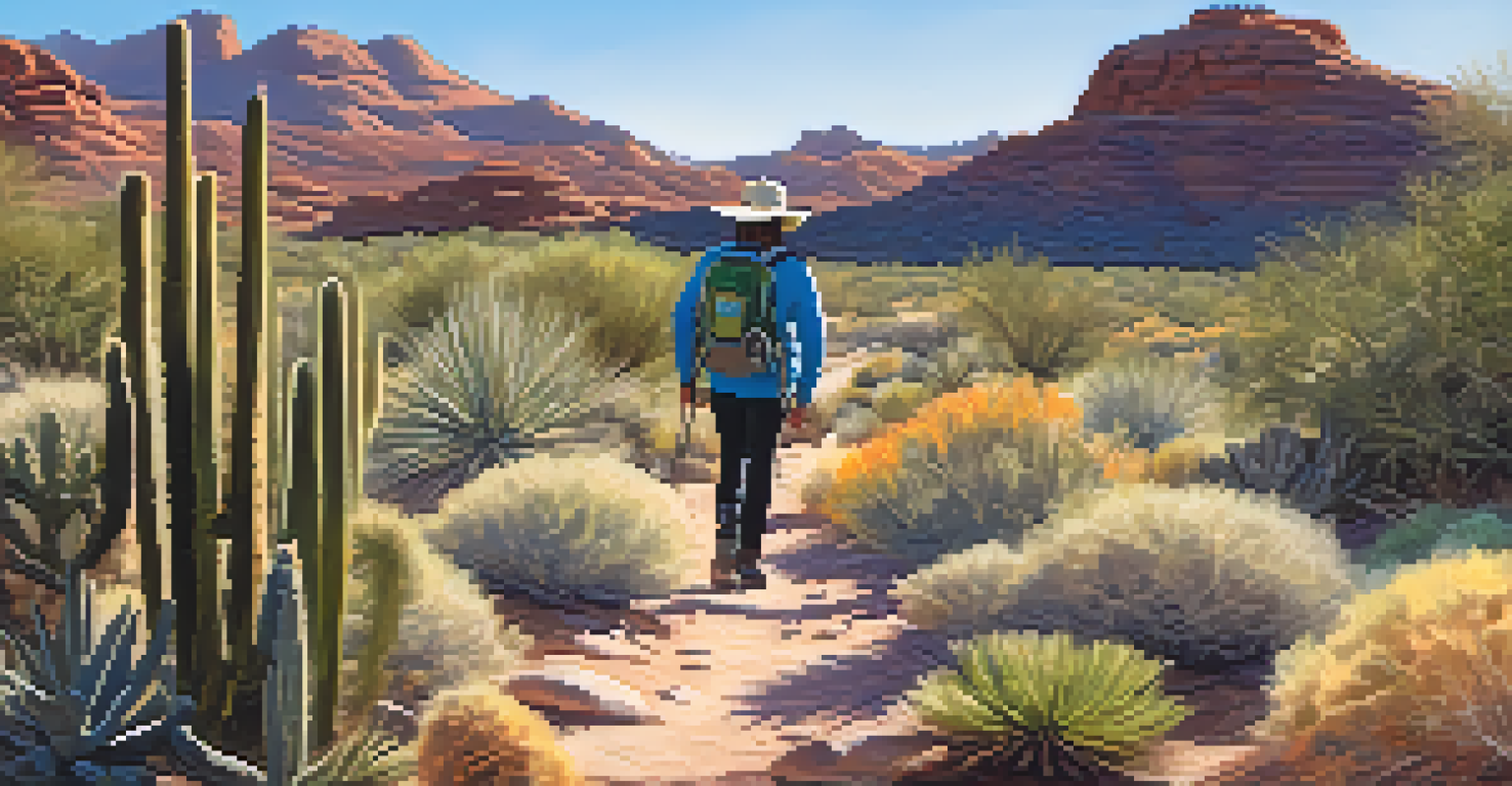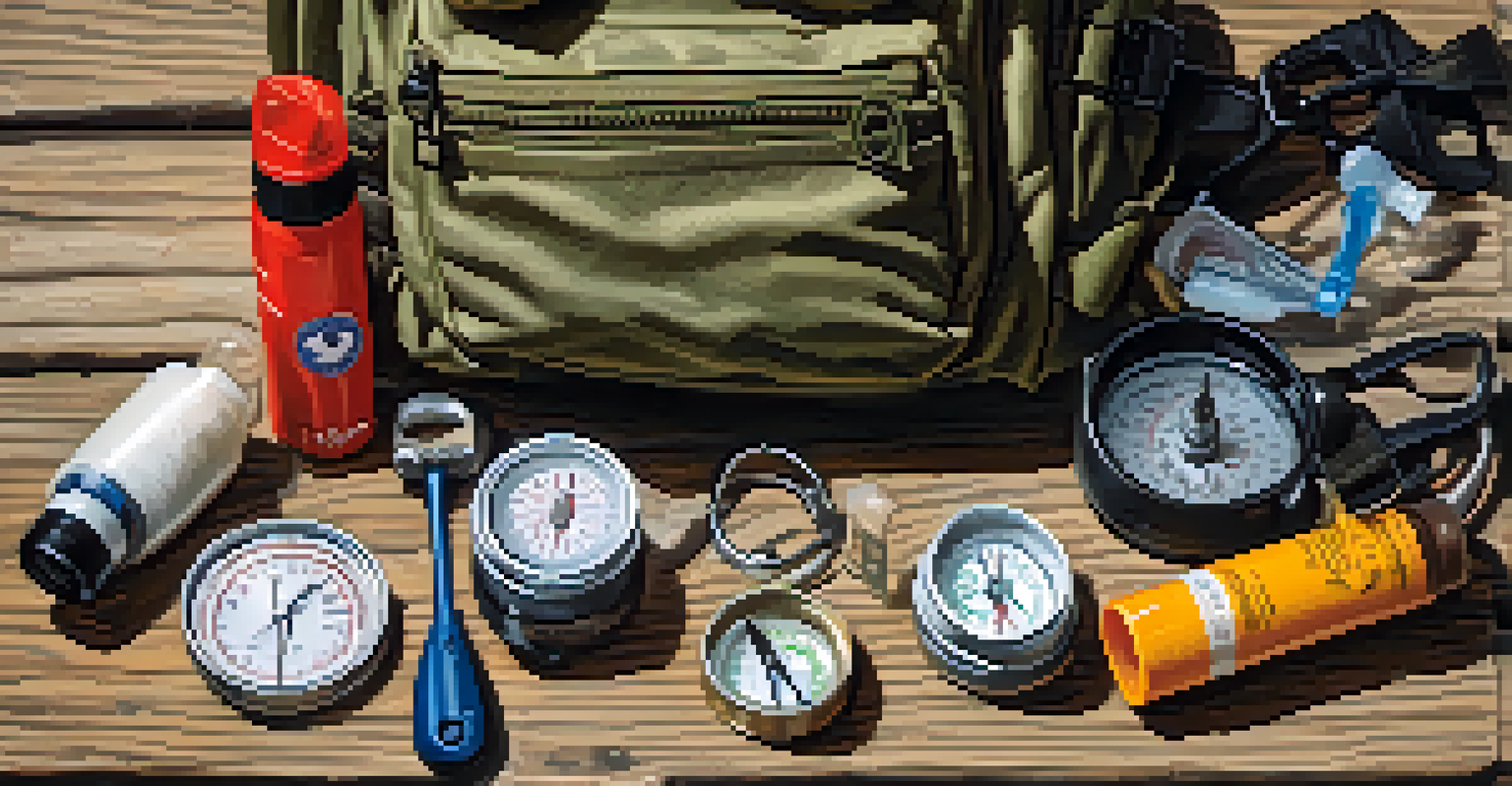Essential Hiking Safety Tips for Scottsdale Trail Adventures

Know Your Trail: Research Before You Go
Before lacing up your hiking boots, take some time to research the trail you plan to explore. Scottsdale is home to numerous trails, each with its own level of difficulty and unique features. Understanding the terrain, elevation changes, and estimated hiking time can significantly enhance your experience.
The journey of a thousand miles begins with one step.
Use resources like trail maps, hiking apps, and local guides to gather information. Look for reviews from fellow hikers to get an idea of what to expect. This knowledge not only prepares you physically but also mentally, ensuring you're ready for the adventure ahead.
Additionally, familiarize yourself with the park rules and regulations. Some trails might have specific guidelines for safety or wildlife encounters, and being informed can help you avoid potential hazards.
Dress Appropriately for Scottsdale's Weather
Scottsdale's weather can be unpredictable, with temperatures soaring during the day and cooler evenings. Dressing appropriately is crucial for a comfortable hiking experience. Start with moisture-wicking base layers to keep sweat away from your skin, and consider wearing lightweight, breathable fabrics.

Don't forget to protect yourself from the sun. A wide-brimmed hat and UV-blocking sunglasses can shield you from harmful rays. Additionally, apply sunscreen generously, especially on exposed skin, to prevent sunburn.
Research Your Trail Before Hiking
Understanding the trail's terrain, difficulty, and regulations enhances your hiking experience.
Lastly, sturdy hiking boots are essential. They not only provide support but also protect your feet from sharp rocks and uneven terrain. A good pair of boots can make a world of difference, especially on Scottsdale's rugged trails.
Stay Hydrated: Bring Enough Water
Staying hydrated is one of the most important aspects of hiking, especially in Scottsdale's arid climate. Dehydration can sneak up on you, leading to fatigue and decreased performance on the trail. It's recommended to drink water regularly, even if you don't feel thirsty.
In every walk with nature one receives far more than he seeks.
A general rule of thumb is to carry about half a liter of water for every hour of hiking. Consider investing in a hydration pack or water bottles that easily fit in your backpack. Having water readily available can keep your energy levels up and your spirits high.
Remember, it's not just about carrying water but also knowing when to drink. Take sips throughout your hike rather than waiting until you feel thirsty. This proactive approach will help you maintain your hydration levels and enjoy your hike to the fullest.
Pack Essential Safety Gear for Your Hike
When heading out on a hike, packing essential safety gear can be a game-changer. Items like a first-aid kit, a whistle, and a flashlight can provide peace of mind and assistance in case of emergencies. A well-prepared hiker is a safer hiker, ready for unexpected situations.
Navigation tools are also crucial. While many trails are well-marked, it’s wise to have a map and compass or a GPS device on hand. These tools can guide you back on track if you stray off the path, ensuring you don’t lose your way.
Stay Hydrated on the Trail
Carrying enough water and drinking regularly is crucial to prevent dehydration in Scottsdale's arid climate.
Lastly, consider bringing a multi-tool or knife. It can come in handy for various tasks, from opening food packages to making minor repairs on gear. Being equipped with the right tools can enhance your confidence and safety on the trail.
Understand Wildlife Safety and Etiquette
Scottsdale's trails are often home to a variety of wildlife, adding to the beauty of your hike. However, it's essential to understand how to interact safely with these creatures. Always maintain a respectful distance from animals, and never attempt to feed or approach them.
Familiarize yourself with the local wildlife, such as snakes or coyotes, and know how to react if you encounter them. For example, if you spot a snake, give it space and allow it to pass. Understanding their behavior can help you avoid dangerous situations.
Additionally, practicing Leave No Trace principles ensures that wildlife habitats remain undisturbed. Carry out all trash, stay on designated trails, and respect the natural environment. This not only protects the wildlife but also enhances the hiking experience for future adventurers.
Hike with a Buddy: The Buddy System
Hiking with a friend or a group can greatly enhance safety during your outdoor adventures. The buddy system not only keeps you company but also ensures there's someone to assist in case of an emergency. It's always better to have someone by your side, especially on less-traveled trails.
Additionally, hiking with others allows for shared experiences and memories. You can motivate each other to tackle challenging sections of the trail and celebrate your accomplishments together. Plus, it's a fantastic way to strengthen friendships while enjoying the great outdoors.
Prioritize Safety and Wildlife Etiquette
Packing essential safety gear and respecting wildlife is vital for a safe and enjoyable hiking experience.
If hiking alone is your preference, let someone know your itinerary and expected return time. This way, someone will be aware if you don't come back as planned, ensuring help can be dispatched if needed. Safety in numbers, or at least in communication, is a crucial aspect of responsible hiking.
Keep an Eye on the Weather: Be Prepared
Weather conditions can change rapidly in the desert, so keeping an eye on the forecast before and during your hike is vital. Check for any alerts or warnings that may affect your plans, and be prepared to adjust your route if necessary. A sunny day can quickly turn into a stormy one, so being informed is key.
If you're caught in unexpected weather, knowing how to respond can make a significant difference. Seek shelter, avoid exposed areas during thunderstorms, and stay calm. Having a plan for adverse conditions can help you navigate challenges more effectively.

Ultimately, being flexible with your hiking plans based on the weather will enhance your safety and enjoyment. Embrace the adventure, but always prioritize your well-being by respecting nature's unpredictability.